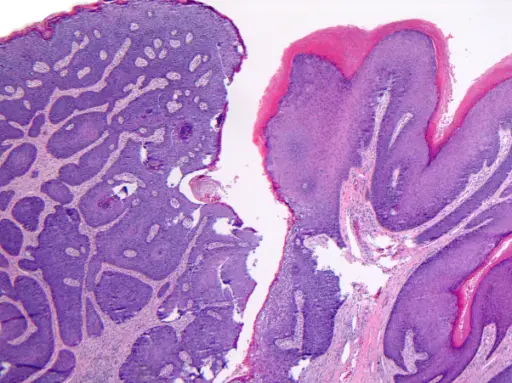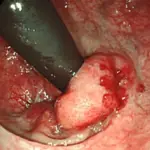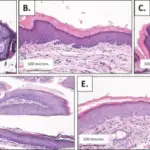Anal transition zone carcinoma is he mucosa of the anal transition zone having both squamous and transitional features. Carcinomas arising in this zone. have, in the past, been referred to as “cloacogenic”, a term of doubtful validity.
What is the Pathology of Anal Transition Zone Carcinoma?
The pathology of anal transition zone carcinoma is:
-Etiology: The cause of anal transition zone carcinoma is human papilloma virus HPV infection.
-Genes involved: 5q21.
-Pathogenesis: The sequence of events that lead to anal transition zone carcinoma are tumors arise from anal transition zone and are grouped together.
-Histology: The histology associated with anal transition zone carcinoma vary from well-differentiated squamous cell carcinomas with evident keratinization to basaloid carcinomas composed of small undifferentiated cells with peripheral palisading.
How does Anal Transition Zone Carcinoma Present?
Patients with anal transition zone carcinoma typically more females and younger than 30 years of age. The symptoms, features, and clinical findings associated with anal transition zone carcinoma include: pain or a feeling of fullness around the anus, lumps that may resemble hemorrhoids, changes in bowel movements, a discharge from the anus, swollen lymph nodes in the groin or anal area.
How is Anal Transition Zone Carcinoma Diagnosed?
Anal transition zone carcinoma is diagnosed by anoscopy, flexible sigmoidoscopy, and biopsy.
How is Anal Transition Zone Carcinoma Treated?
Anal transition zone carcinoma is treated by chemotherapy and radiation.
What is the Prognosis of Anal Transition Zone Carcinoma?
The prognosis of anal transition zone carcinoma is poor.



